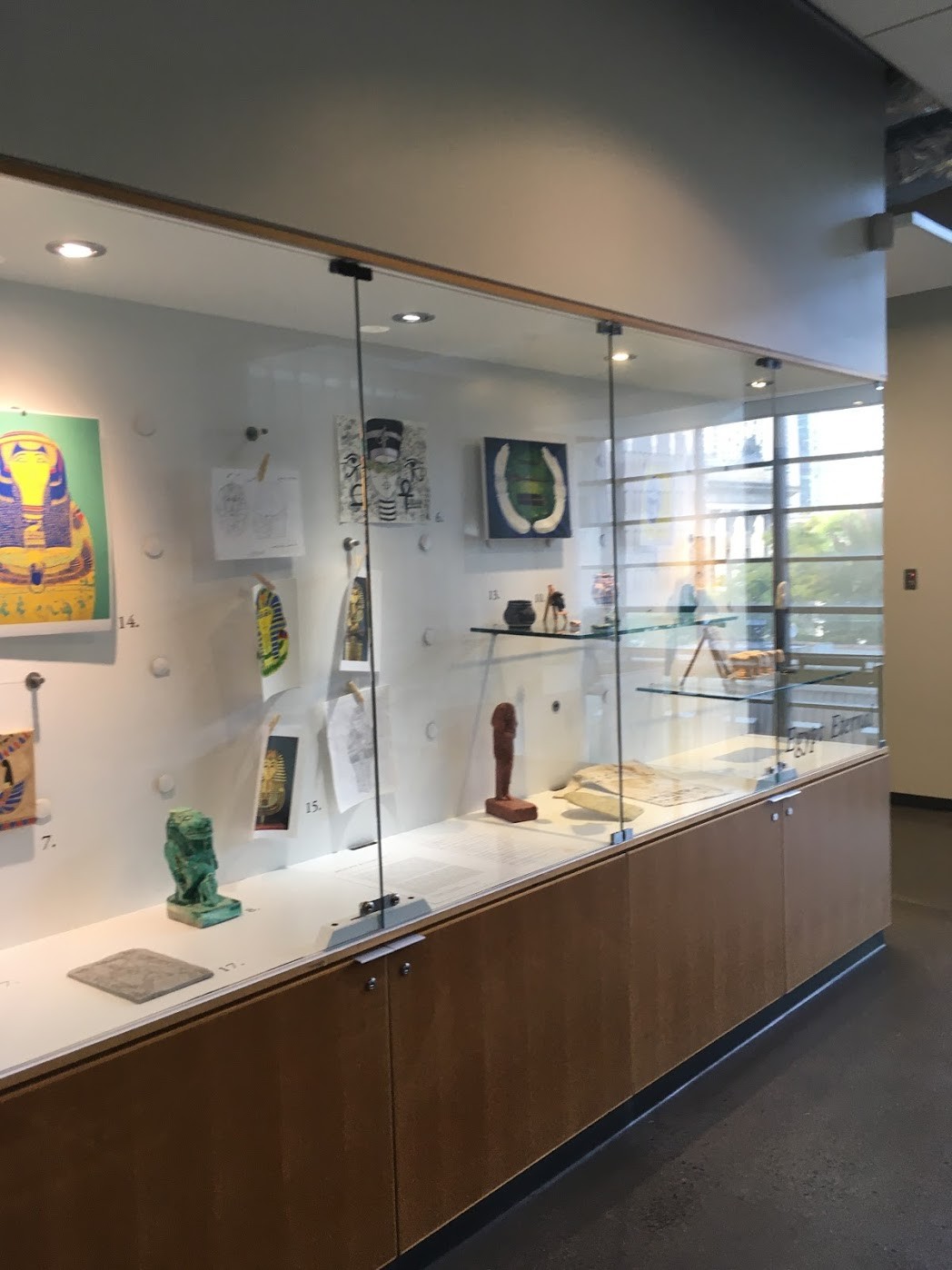Egypt Eternal
ARTH 351: Studies in the History of Sculpture
Curated by Cynthia Sbarra & Braden Lee Scott
February 24 – March 13th 2020
When comparing two ancient Egyptian sculptures made thousands of years apart, their similarity is remarkable. On a timeline, Ramses II was as far away from Narmer as we are from Cleopatra, and yet the architectural relief sculpture from the interior of Ramses’ temple at Abu Simbel is iconographically similar to the prehistoric palette of Narmer. Students in ARTH 351 – Studies in the History of Sculpture: Origins and Afterlife of Egyptian Architectural Sculpture, are studying these histories of Egyptian sculpture while thinking through terms such as canon, history, monument, influence, and style. Along the way, we are discussing the following key questions: why do so many Egyptian sculptures look the same? Were there any variables—works of art that broke from the mould—and how were they received? What did it mean when foreign rulers sculpted themselves as Egyptian pharaohs? How can a study of Egyptian sculpture affect the way we understand global art history that takes place over five thousand years? To answer these as a class, we study both the sculpture of ancient Egypt, and the reception/recreation/spoliation of Egyptian sculpture over the last two millennia.
The works in this exhibition are the newest additions to the long history of Egyptian sculpture. Artists in the class engaged with the complex historical dimensions of the subject: some chose to replicate a prototype as closely as possible, and many took varying degrees of licence in their processes and media. Since the programme of ancient Egyptian architectural complexes was to carry on forces of vitality after death, the intentions of ancient Egyptian sculptors continue to live in these contemporary works of art. This commonality, however, became a problem for some of the artists in this exhibition, as not all sculpted works that have survived were intended to be seen by the living, and many climactic variabilities have determined which kind of natural materials have survived for modern study. These works are therefore analogous to the ancient Egyptian monumental impulse that desired eternal images, and, they are critically formed layers in the process of carrying on the histories of Egypt.
Contact: Braden Scott (braden.scott@concordia.ca); Cynthia Sbarra (cynthiasbar@gmail.com)

